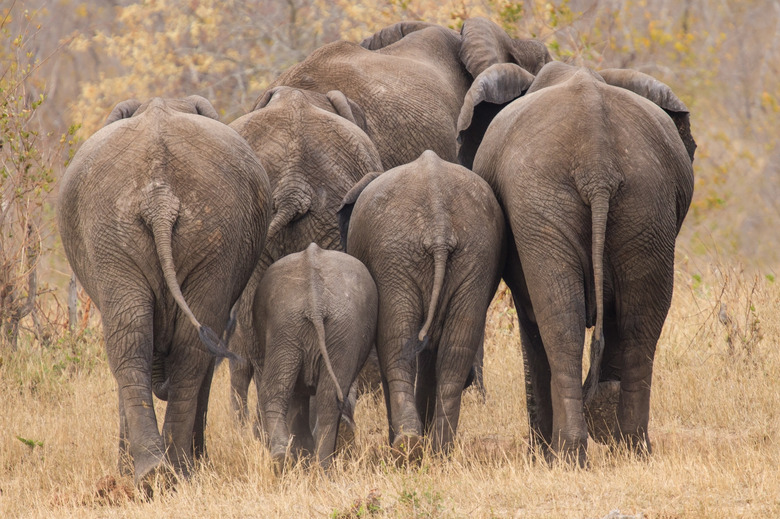Examples Of Density-Dependent Limiting Factors
It's easy to think of population limiting factors only in terms of animals and plants, but these factors apply to humans as well. Some of these factors, such as earthquakes, floods and natural disasters, affect populations regardless of their density and are known as density-independent. Density-dependent factors, however, refer to those that have great impact only once populations reach a certain level.
Energy Supply
Energy Supply
The demand for energy sources affects populations in a way that is proportional to their density. For example, if only one locust were to inhabit an area, chances are that food demand wouldn't be such a pressing issue. However, locusts live in swarms, and they will deplete an area of the food before migrating to a new area. Likewise, if the jackrabbits in one part of Death Valley National Park run short of food, they will begin to die off and have to migrate to another place where either food is plentiful or there aren't as many jackrabbits.
Predation: The Balance of Hunter & Hunted
Predation: The Balance of Hunter & Hunted
In some cases imbalances in predator-prey relationships create density-dependent limiting factors. A reduction in the number of jackrabbits in one area of Death Valley could result in less available food for the local coyote population, demanding an adjustment – whether coyote mortality or dispersal elsewhere. Snowshoe hares and their predators – such as Canada lynx, goshawks and great horned owls – in the boreal zone of North America exhibit a classic example of density-dependent regulation: Hare numbers rise, promoting a slightly delayed increase in predator populations, then crash, resulting in a decrease among predators deprived of the former bounty.
Competition Among Species
Competition Among Species
Competition between species for food may serve as a density-dependent limiting factor when at least one of two populations reaches a density where the two populations combined overwhelm the food supply. For example, when rainbow smelt were introduced into Lake Winnipeg, they put a strain on the flourishing population of emerald shiners because both species eat the same food. This competition likely explains the resulting decrease in emerald shiners. Also, competition isn't limited to animals. Eurasian water milfoil is a freshwater aquatic plant that grows and spreads rapidly in ponds and lakes. It can use up much of the dissolved oxygen that other plants and fish need to survive.
Disease: A Peril for Dense Populations
Disease: A Peril for Dense Populations
Disease can be density-dependent because organisms have to live close enough to one another for the disease to spread. In the context of humanity, it is easier to see how disease can spread in a city such as New York or Hong Kong as opposed to the rural setting of Wyoming. Research conducted at the Ohio State University shows a link between population density and higher percentages of water-borne illnesses. This shouldn't be a surprise, as many high-population areas utilize integrated city water systems while many rural areas still use individual wells. The denser population creates the need for a community water supply, which then serves as a transport for pathogens.
Cite This Article
MLA
Cascio, Christopher. "Examples Of Density-Dependent Limiting Factors" sciencing.com, https://www.sciencing.com/examples-densitydependent-limiting-factors-13960/. 16 May 2018.
APA
Cascio, Christopher. (2018, May 16). Examples Of Density-Dependent Limiting Factors. sciencing.com. Retrieved from https://www.sciencing.com/examples-densitydependent-limiting-factors-13960/
Chicago
Cascio, Christopher. Examples Of Density-Dependent Limiting Factors last modified March 24, 2022. https://www.sciencing.com/examples-densitydependent-limiting-factors-13960/
